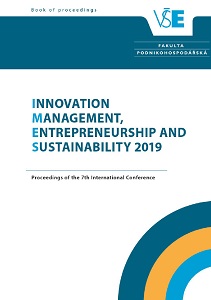
Senior, Youth And Women Entrepreneurship In the European Regions
Purpose: The study aims to empirically investigate characteristics of regional distribution ofinclusive entrepreneurship in Europe through the selected less represented segments (seniors, women,youth) and to identify how the selected factors influence the extent to which the underrepresentedgroups are engaged in entrepreneurship. Design/methodology/approach: The study is based on Global entrepreneurship monitor (GEM) data(both APS – adult population survey and NES - national expert survey data) and the GDP per capitain PPS. A pooled sample of individual-level APS GEM data of 30 European countries for the periodof 2011 to 2016 was used. The sample is weighted to be representative. K-Means clustering using Hartigan and Wong algorithm was applied to divide countries into clusters based on constructedinclusivity indices of seniors, women and youth. Findings: We have identified four clusters among the studied European countries. Based on theiranalysis in the context of economic and entrepreneurial environment, and individual entrepreneurialcharacteristics, we found that opportunity perception increases with a higher level of the studiedenvironment. A better environment in combination with individual entrepreneurial characteristics,encourage especially seniors to start their businesses, while youth under these circumstances, preferto use employment opportunities. However, youth are more involved in entrepreneurship under weakeconomic and entrepreneurial conditions. Women do not seem to be significantly influenced neitherby economic and entrepreneurial environment nor individual entrepreneurial characteristics. Research/practical implications: Our findings provide information for policy makers. Presentedresults may help to improve the environment, and formulate strategies on inclusive entrepreneurshipand employment policy, which depend on the regional development stage and the level ofentrepreneurial involvement of the selected underrepresented groups. Future research should addressinclusive entrepreneurship further in the context of socioeconomic and cultural variables. Originality/value: The paper offers a value by providing a unique insight on inclusivity ofentrepreneurial activities in Europe, by breaking down the GEM-based analysis of female, youth andsenior entrepreneurship to regional levels.
More...